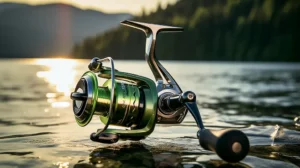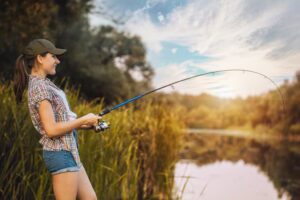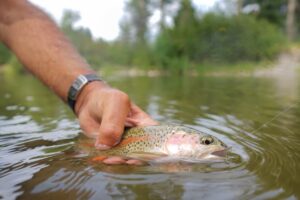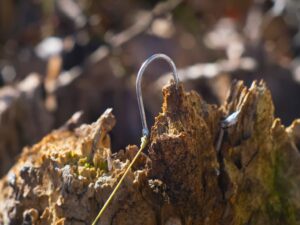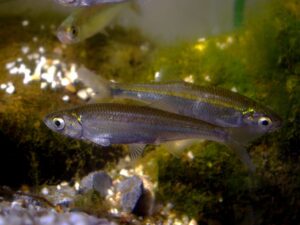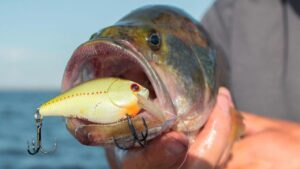Freshwater Fishing Techniques
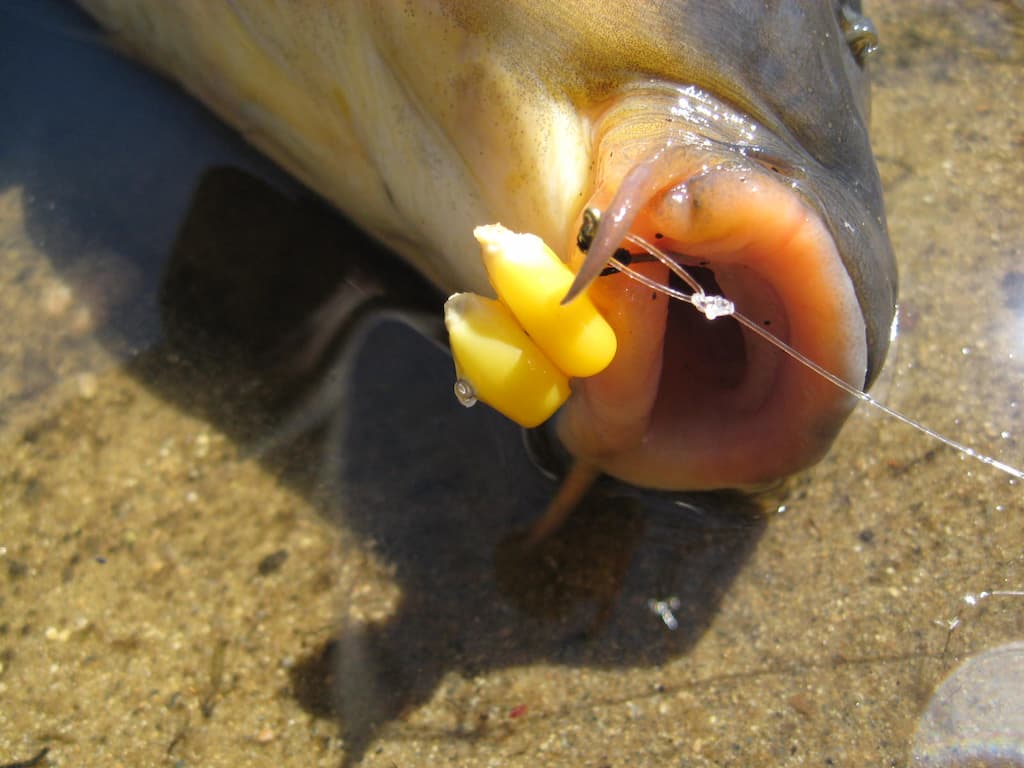
Freshwater fishing is a popular pastime enjoyed by anglers around the world. Whether you’re an experienced angler or just starting out, understanding various fishing techniques can greatly enhance your chances of success on the water.
In this article, we will explore a wide range of fishing techniques specifically tailored for freshwater angling. From basic techniques to specialized approaches for targeting specific fish species like carp or wels catfish, we’ll cover it all.
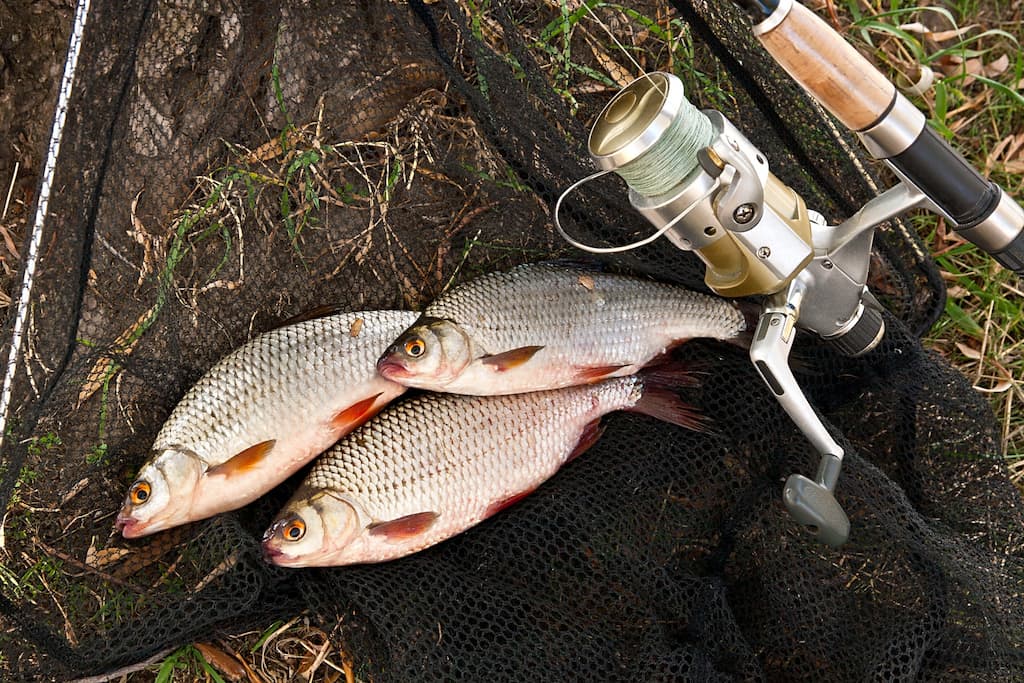
What is Freshwater Fishing ?
Freshwater fishing refers to the act of fishing in non-saltwater environments such as lakes, rivers, ponds, and streams. It is a recreational activity that provides a tranquil and rewarding experience for anglers of all ages. Freshwater fishing is not only about catching fish; it also allows people to connect with nature and unwind from the stresses of everyday life.
Fishing Equipment for Freshwater Angling
Before delving into the various fishing techniques, it’s important to understand the essential equipment needed for successful freshwater angling. The right gear can make a significant difference in your fishing experience. Some key equipment includes:
- Rods, Reels, and Lines: Choose a fishing rod and reel that suits your fishing style and target species. Match the fishing line strength to the expected fish size and habitat.
- Hooks, Sinkers, and Floats: Use appropriate hooks based on the bait and fish you’re targeting. Sinkers help your bait reach the desired depth, while floats indicate bites.
- Bait and Lures: Select bait or lures based on the fish species you intend to catch. Live bait, such as worms or minnows, is popular, but artificial lures can also be effective.
Basic Freshwater Fishing Techniques
- Still Fishing: This technique involves casting your line and allowing it to remain stationary until a fish takes the bait.
- Casting and Retrieving: Cast your bait or lure into the water and retrieve it in a manner that mimics natural prey, enticing fish to strike.
- Trolling: This technique involves towing your bait or lure behind a moving boat to cover a larger area and attract fish.
- Drift Fishing: Drift with the current while presenting your bait or lure, allowing it to move naturally and attract fish.
Specialized Techniques for Carp Fishing
Carp fishing requires specific techniques due to the behavior and feeding habits of these species. Here are some specialized techniques used for carp fishing:
- Bottom Fishing: Place your bait on or near the lake or riverbed to target carp feeding on the bottom.
- Surface Fishing: Present your bait or lure on the water’s surface to entice carp feeding near the top.
- Method Feeder Fishing: Utilize a method feeder, a specialized fishing rig that holds bait, to attract carp. The feeder releases the scent and attractants, drawing carp to your fishing spot.
Techniques for Wels Catfish Fishing
Wels catfish are known for their size and strength, requiring specific techniques to target them effectively. Here are some techniques commonly used for wels catfish fishing:
- Using Live Bait: Wels catfish are often attracted to live baits such as large worms, small fish, or even live frogs. Present the live bait near potential hiding spots to entice a strike.
- Dead Bait Fishing: Use dead fish, fish fillets, or fish chunks as bait for wels catfish. Position the bait on or near the riverbed to lure them in.
- Float Fishing: Employ a float rig to suspend the bait at a specific depth, allowing you to cover a wider area and increase your chances of catching wels catfish.
Other Freshwater Fishing Techniques
Apart from the basic and specialized techniques mentioned above, there are various other freshwater fishing techniques that anglers can explore. These include:
- Fly Fishing: This technique involves using a weighted fly line and artificial flies to imitate insects or small baitfish, primarily targeting trout and salmon.
- Ice Fishing: Ice fishing is a winter activity where anglers drill holes in frozen lakes and fish through them. Specialized equipment and techniques are required for success in this challenging environment.
- Jigging: Jigging involves vertically moving a weighted lure up and down in the water column to entice fish. It’s effective for various species, including walleye, bass, and pike.
- Drop Shotting: This finesse technique involves attaching a small weight below the hook and presenting soft plastic baits near the bottom, enticing fish to strike.
- Carolina Rigging: Popular for bass fishing, this technique involves a weighted sliding sinker above a swivel, allowing the bait to move naturally and attracting fish.
Safety Tips for Freshwater Fishing
While enjoying freshwater fishing, it’s crucial to prioritize safety. Here are some essential safety tips to keep in mind:
- Always wear a properly fitted life jacket or personal flotation device (PFD) when fishing from a boat or in water.
- Be aware of your surroundings and watch out for potential hazards such as rocks, submerged branches, or strong currents.
- Use sunscreen and wear a hat and sunglasses to protect yourself from the sun’s harmful rays.
- Stay hydrated and bring drinking water with you to prevent dehydration.
- Familiarize yourself with local fishing regulations and obtain the necessary permits or licenses.
Best Practices for Catch and Release
Conservation is an important aspect of freshwater fishing. Follow these best practices when practicing catch and release:
- Use barbless hooks or flatten the barb to minimize injury to the fish.
- Handle fish with wet hands or use a wet cloth to prevent removing their protective slime coating.
- Release fish gently, ensuring they have revived and can swim away on their own before letting them go.
- Avoid keeping fish out of the water for extended periods and minimize handling time to reduce stress.

